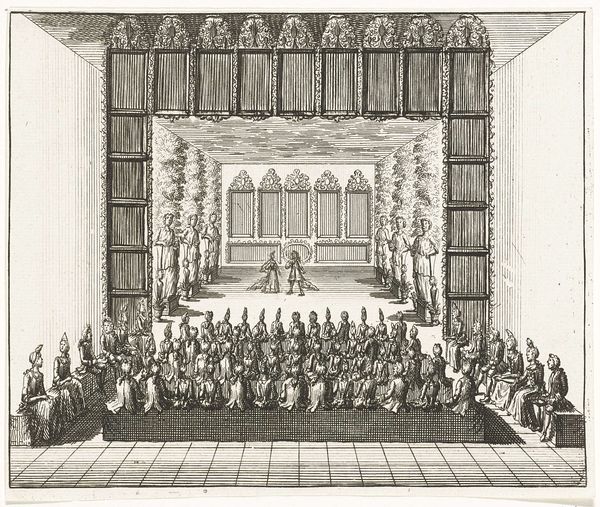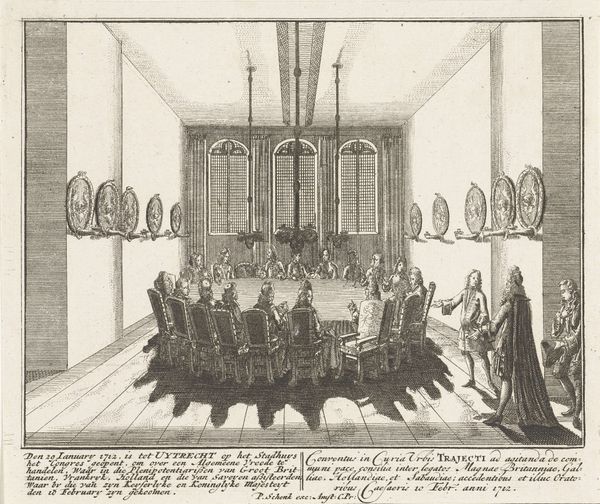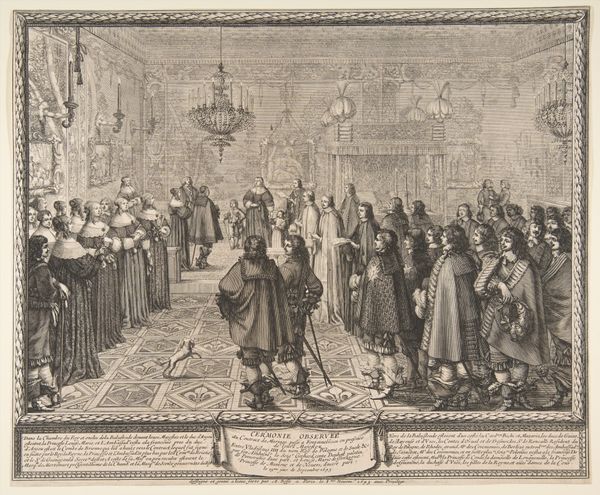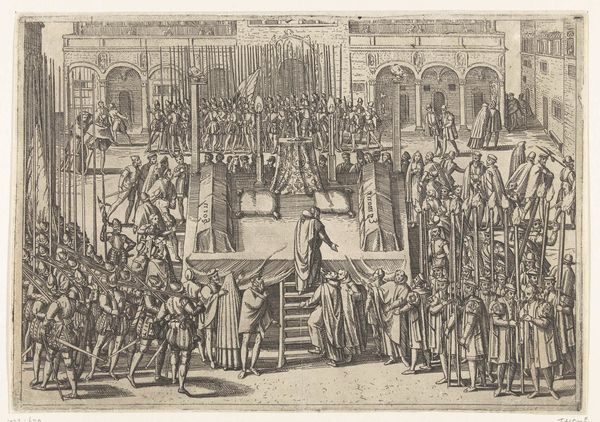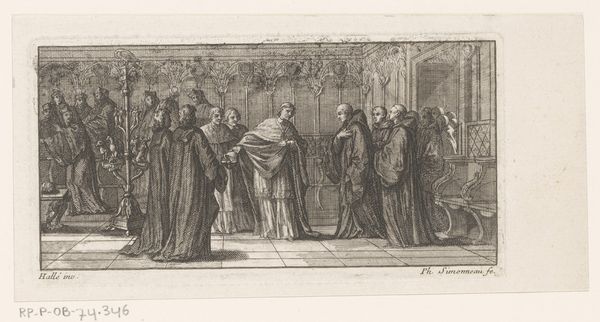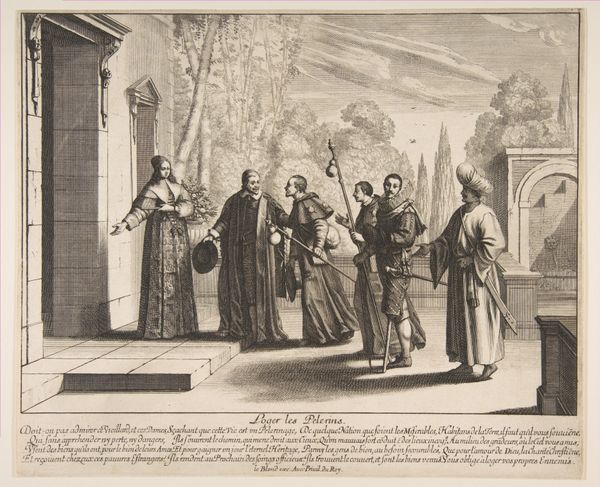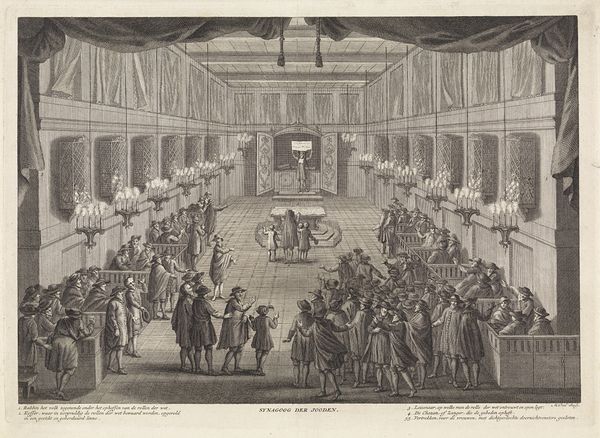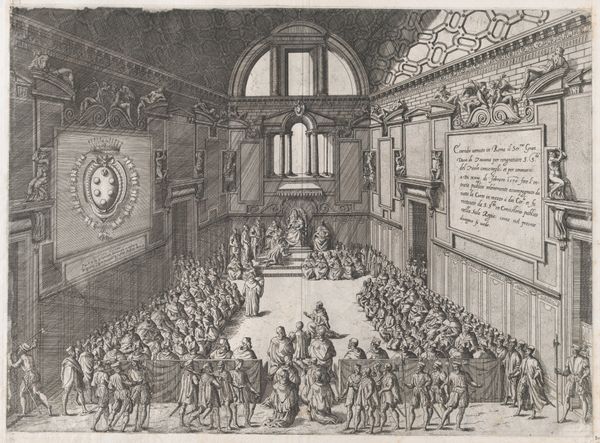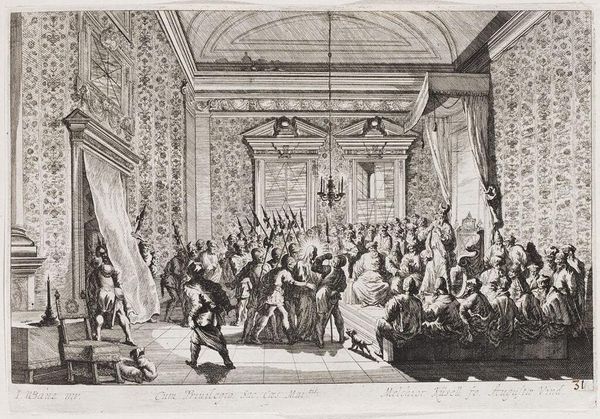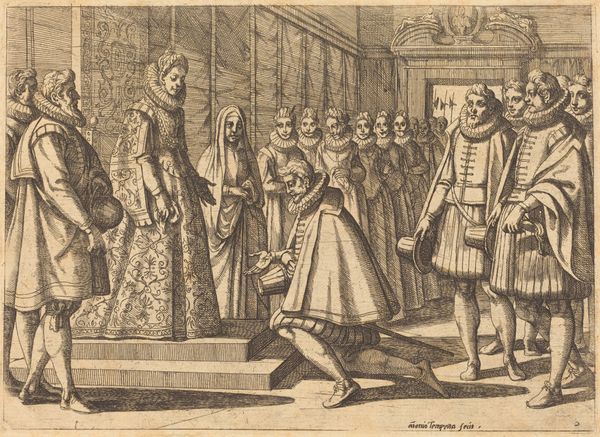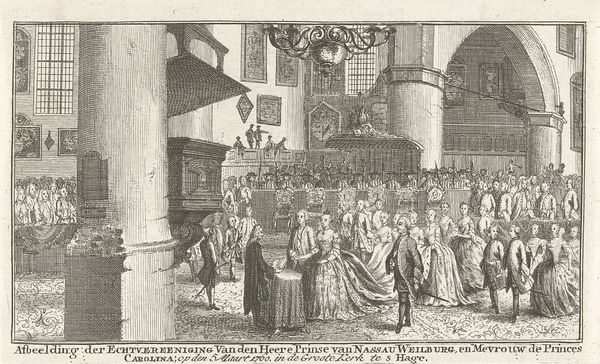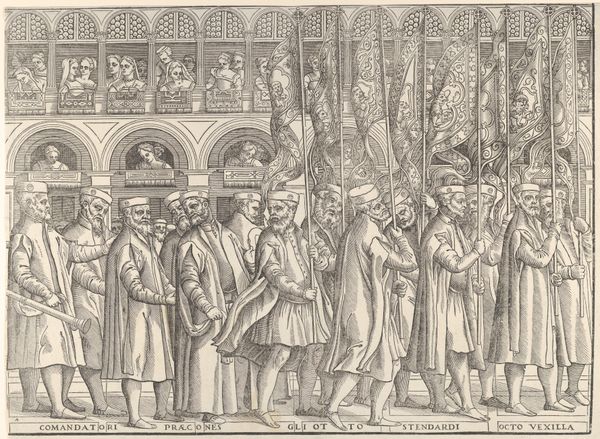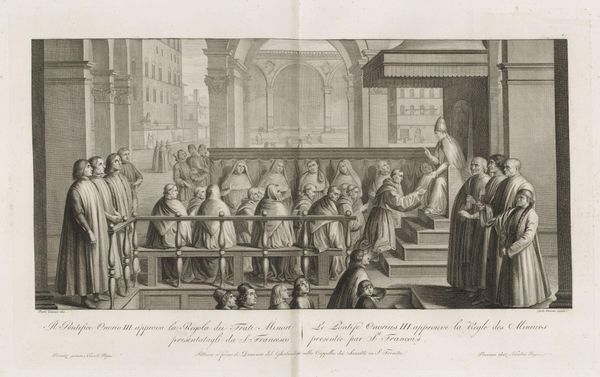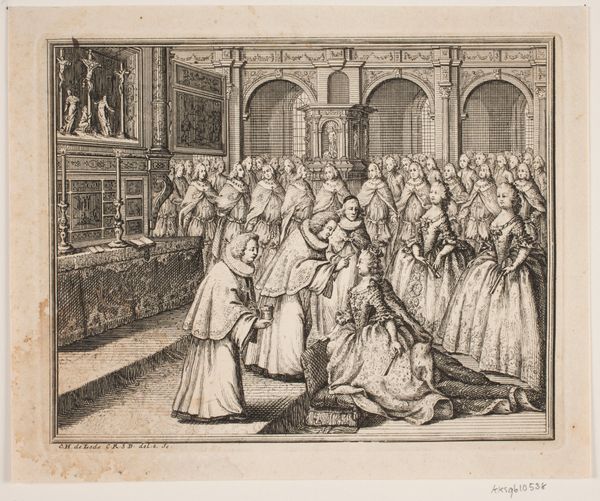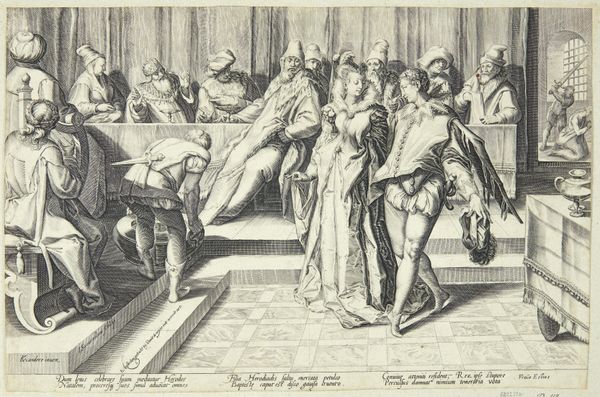
An Ambassador's Audience with the Grand Vizier in his Yali on the Bosporus (Ambassador Cornelis Calkoen, 12 August 1727) 1700 - 1800
0:00
0:00
painting, oil-paint
#
portrait
#
baroque
#
painting
#
oil-paint
#
cityscape
#
genre-painting
#
history-painting
Dimensions: height 92.5 cm, width 129.5 cm, depth 6.5 cm
Copyright: Rijks Museum: Open Domain
Editor: This oil painting, "An Ambassador's Audience with the Grand Vizier in his Yali on the Bosporus," likely painted sometime in the 18th century, depicts a formal gathering of people, almost like a stage play frozen in time. There's an immediate sense of hierarchical structure embedded within the scene. How do you interpret this work, especially considering its historical context? Curator: This painting offers a lens through which to examine early modern power dynamics between Europe and the Ottoman Empire. Notice how the artist carefully delineates identities through costume and positioning. It's more than just a record of a meeting; it's a staged performance of cultural diplomacy and negotiation. How do you see issues of representation at play here? Editor: Well, the ambassador and his delegation are clearly differentiated by their Western attire from the Ottoman officials. It feels like the painting subtly reinforces a sense of European superiority through its visual framing, placing them slightly apart, in conversation, while the Ottomans are lined up in formal subservience. Is that intentional? Curator: It's definitely a possible reading. We have to consider the context of Orientalism: How European artists frequently depicted the "East" to reinforce Western cultural dominance. The artist's choices regarding composition, light, and even the detailing of architectural space, contributes to an interpretation that underscores difference and perhaps even a veiled sense of control. Does considering that framework change how you understand the artwork? Editor: It certainly does. Seeing it now, the meticulous rendering of Ottoman dress, compared to the more dynamic poses of the ambassadors, creates a very loaded image. Curator: Exactly. And remember, these images were often consumed by a European audience, reinforcing certain preconceived notions and shaping political sentiment. Recognizing the potential biases is the first step in critically assessing its narrative. Editor: I will never look at this piece the same way. It really highlights how art can be a tool of cultural projection. Curator: Absolutely. And hopefully, prompts further engagement with critical theory in analysing representations of otherness in art.
Comments
No comments
Be the first to comment and join the conversation on the ultimate creative platform.
